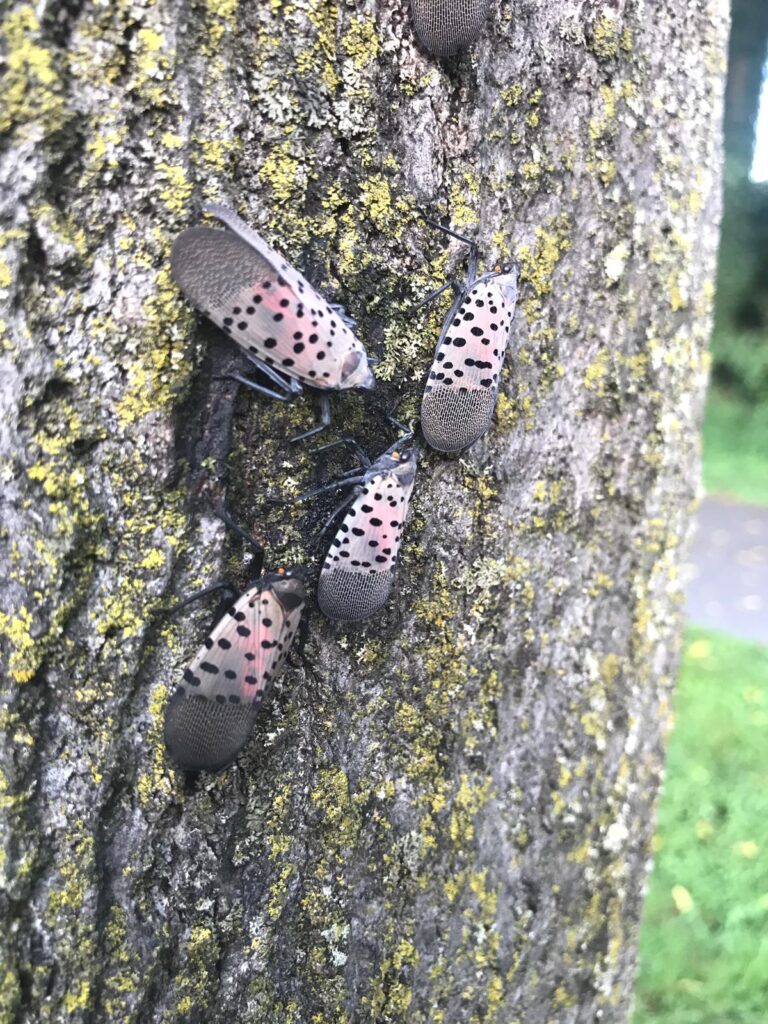October 8, 2024

Spotted lanternfly is a persistent threat to the agriculture and forestry sectors and the natural environment in Southern Ontario. This invasive insect has spread considerably across northeastern U.S. states. Although there have been no detections of this invasive insect to date in Canada, there have been live and dead sightings and interceptions in Ontario and Quebec in the last two years, making public vigilance and reporting highly important.
The Invasive Species Centre, with support from the Greenbelt Foundation, delivered a workshop on spotted lanternfly impacts to Greenbelt lands, detection, and reporting in Fonthill this Thursday. The event featured an information booth and an in-depth presentation by the Invasive Species Centre. Conservationists, industry stakeholders, and outdoor enthusiasts were able to learn about spotted lanternfly and the effects its establishment would have on the environment, economy, and society.
“Spotted lanternfly threatens the agricultural production that drives the Greenbelt’s economy. Grape growers and wine producers would experience negative impacts, along with tender fruit growers and nursery operators. With highly destructive feeding behaviour and the ability to spread rapidly, spotted lanternfly has the potential to devastate grape production in Southern Ontario,” explained Emily Posteraro, Program Development Coordinator at the Invasive Species Centre.
There are 17 states in the U.S. where spotted lanternfly has been detected, with breeding populations as close to the Canada-U.S. border as Buffalo, New York. This increases the probability of this destructive agricultural pest entering and establishing in Canada through trade and recreational travel. Spotted lanternfly has been documented feeding on over 100 species of plants, including native hardwood trees like black walnut and maple. Their heavy feeding can significantly weaken and sometimes kill grapevines.
This insect therefore poses a particular threat to the grape and wine industry, which is estimated to be worth $5.9 billion in the province of Ontario alone (Wine Growers Ontario, 2019). It will also likely affect the apple, hops, tender fruit, horticulture, and forestry industries. Outdoor recreation in parks and other urban green spaces may be negatively impacted as well.
The spotted lanternfly species profile on the Invasive Species Centre website provides an overview of spotted lanternfly identification, life cycle, distribution, impacts, reporting, and resources. It is important to report any suspected sightings of spotted lanternfly to the Canadian Food Inspection Agency. You can contact the CFIA online by visiting https://active.inspection.gc.ca/netapp/contactus/contactuse.aspx.
Both terrestrial and aquatic invasive species can threaten Canada’s environment, economy, and society, including human health. Education, outreach, and prevention of establishment are the most cost-effective ways to reduce these impacts.
Image 1: Adult spotted lanternflies can be seen congregating on a host tree in Pennsylvania, U.S.A.
Image 2: Workshop attendees learned the importance of public vigilance and reporting in preventing the establishment of spotted lanternfly.
Media contact:
Deborah Sparks
Business Development and Communications Manager
Invasive Species Centre
media@invasivespeciescentre.ca
705-255-8301
